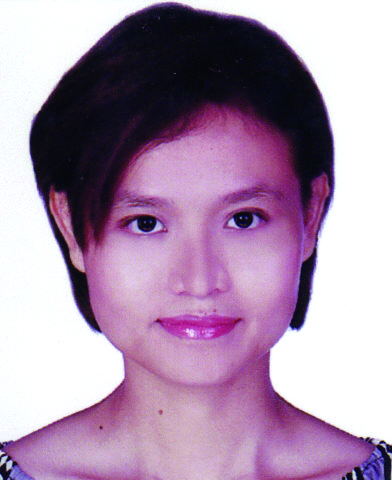The Asian Children’s Collection: Multicultural Children’s Literature
Librarians Panna Kantilal and Norasyikin binte Ahmad Ismail share about the importance and highlights of the Asian Children’s Collection.
.jpg)
The Asian Children’s Collection on Level 10 of the Lee Kong Chian Reference Library (LKCRL) started at a time when children’s literature was predominantly of British/American origin. The core aim of establishing this collection of works written for children pertaining to Asia and its people was to present the concept and raise the awareness and understanding of Asian-centric children’s literature compared with that of Anglo-Saxon children’s literature. Since its inception in the early 1960s when it had fewer than 200 books, the collection has grown into a unique resource comprising more than 20,000 materials for research relating to Asian Children’s literature.
The collection is targeted at researchers interested in the origins of Asian-oriented children’s books and the influences and attitudes affecting the pattern and stages of their development. The target audience would include the educationist, writer, illustrator, publisher, student and librarian interested in the use and production of children’s reading and learning materials from an Asian perspective and an Asian identity.
This collection covers literary materials for children up to 14 years of age in the four official languages – English, Malay, Chinese and Tamil – and selectively in other Asian languages with English translations. It comprises fiction books, picture books, folk/fairy tales, myths and legends and select nonfiction materials in children’s literature (largely materials that depict the customs, culture and mores of Asian society, such as poetry, social beliefs, religion, etc) as well as reference materials such as guides, bibliographies and studies on Asian Children’s literature.
Comprising primarily children’s materials, it provides the user with a multicultural experience and at the same time exposes the user to the richness and variety of Asian customs and civilisations. Moreover, the materials in the Asian Children’s Collection also promote a thoughtful understanding of the Asian way of life and values. This is crucial since there is usually a greater exposure to Anglo-Saxon literature which predominates the publishing market and which inadvertently projects values, customs, traditions, way of life and culture that are somewhat different from those found in Asia.
The importance of this collection stems from the fact that it was developed with the aim to interest researchers to delve into the study of children’s literature with an Asian theme and setting or with an Asian protagonist. Since the “publishing industry categorises all books with non-white characters as multicultural” (Hill, 1998), the Asian Children’s Collection can be classified as multicultural literature since it contains children’s literature covering the following geographical regions: Southeast Asia, South Asia, East Asia, Central Asia and Southwest Asia.
Research in this field has shown multicultural literature as a vehicle that encourages tolerance and understanding among children (Bainbridge, 1999). This is achieved because multicultural literature is “literature about racial or ethnic minority groups that are culturally and socially different from the white Anglo-Saxon majority” (Norton, 1999). As Bainbridge (1999) says, “multicultural literature is literature that depicts and explores the lives of individuals who belong to a wide range of diverse groups”, and hence it encourages positive attitudes towards difference. “If literature is a mirror that reflects human life, then all children who read or are read to need to see themselves reflected as part of humanity” (Loh, 2006).
Therefore, it is important for children to read and be exposed to materials depicting their own culture and minority cultures. This is so because “books can be a powerful tool for promoting cultural understanding” and “reading about diverse perspectives enhances multicultural awareness” (Loh, 2006) as it supplies the reader with images, ideas and models that they can relate to. Moreover, it is crucial that children’s literature reflects the reality of our pluralistic society (Higgins, 2002) so that children are then better able to see themselves and their lives reflected in the books they read (Aoki, 1992; Slapin & Seale, 1992).
A number of multicultural children’s literature is about the Asian diaspora, the dispersion of people from their original homeland (Free Dictionary). Originally this word was used for the dispersion of Jewish people outside their Holy Land, but now it has taken on a broader meaning connoting issues of social and cultural significance such as displacement, loss of a shared identity, shared values and customs. Hence issues of hybridism arise, mainly “the notion that there are no pure identities” (Clammer, 2002) and this is especially so in postcolonial societies.
Diaspora in children’s literature would be one topic of interest, especially to students and researchers of Asian literature. Below are some highlights of Asian diaspora – Cambodian, Chinese, Indian, Japanese, Korean, Vietnamese – in the LKCRL Asian Children’s Collection.
The Chinese and Indian diaspora in children’s fiction has grown in importance socially, culturally, politically and economically in recent years, especially in Singapore. Consequently, it has become relevant to see how the different cultures have diversified and how the Indian and Chinese characters are represented in non-Asian settings around the world. Narinder Dhamis’ Bindi Babes (2003) and Bhangra Babes (2005) are examples of the Indian diaspora literature housed in the Asian Children’s Collection.
.jpg)
From the author who wrote the novel Bend It Like Beckham, Bindi Babes focuses on the life episodes of three sisters – Amber, Jazz and Geena – who get a surprise visit from an “unhappening” aunt from India. This story centres on how the sisters deal with their intrusive aunt. In Bhangra Babes, a sequel to the Bindi Babes, Amber, Jazz and Geena face another set of problems, but this time the trouble is at school.
An example of the Chinese diaspora in children’s literature would be the Mo’s Mischief series, which centres on the mischievous life of a Chinese boy in primary school called, Mo Shen Ma, with his four friends, Hippo, Penguin, Monkey and Bat Ears. In the third series, Pesky Monkeys, Mo goes to his grandma’s house for the summer holidays and teaches his grandma’s pig to roller-skate.
.jpg)
The Stone Goddess, a story on the Cambodian diaspora, is a touching tale of a 12-year-old Nakri and her elder sister’s attempts to maintain their hope as well as their classical dancing skills in the midst of their struggle to survive after the communist takeover Cambodia and her family is torn from their city life. Nakri’s family begins life anew in America after Cambodia is liberated.
.jpg)
1001 Cranes, a story of the Japanese diaspora, is an engaging tale of a valued Japanese American custom that transforms the life of a lost 12-year-old Japanese American girl, Angela Michiko. With her parents on the verge of separating, she spends the summer in Los Angeles with her grandparents, when she folds paper cranes into wedding displays, becomes involved with a young skateboarder, and learns how complicated relationships can be.
.jpg)
Slant, a story about the Korean diapora, is a charming tale of 13-year-old Lauren, a Korean-American adoptee, who is tired of being called “slant” and “gook”, and longs to have plastic surgery on her eyes. However, after she convinces her father to agree to the surgery, Lauren starts to question some of her own assumptions when she learns a long-kept secret about her mother’s death.
Escape from Saigon, a story about the Vietnamese diaspora, depicts the experiences of an orphaned Amerasian boy, Long – the son of an American father and a Vietnamese mother – from his birth and early childhood in Saigon (now Ho Chi Minh City), through his departure from Vietnam in the 1975 Operation Babylift and his subsequent life as the adopted son of an American family in Ohio.
.jpg)
Given the diversity of topics of interest available in the Asian Children’s Collection, this treasure trove of a collection is an important and valuable resource for the local library scene. The collection will continue to be developed with the aim to present some of the most excellent children’s publications from across Asia and to showcase the richness of Asian classical stories and fables as well as attractive illustrations for reference and research purposes.

Senior Librarian
Professional Services
National Library

Librarian
National Reference & Special Libraries
National Library
REFERENCES
Andrea Warren, Escape From Saigon (New York: Farrar, Straus and Giroux, 2008)
Ang Seow Leng et al., Asian Renaissance: The Singapore and Southeast Asian & Asian Children Collection Guide (Singapore: National Library Board, 2005). (Call no. RSING 025.21095957 ASI)
Donna E. Norton, Multicultural Children’s Literature: Through the Eyes of Many Children, 2nd ed. (N.J.: Pearson Prentice Hall, 2005). (Call no. R 810.9928208693 NOR)
Ho Minfong, The Stone Goddess (New York: Scholastic, 2005). (Call no. RAC 813.54 HO)
Jennifer Johnson Higgins, Multicultural Children’s Literature: Creating and Applying an Evaluation Tool in Response to the Needs of Urban Educators (New Horizons for Learning, 2006)
John Clammer, Diaspora and Identity: The Sociology of Culture in Southeast Asia (Malaysia: Pelanduk Publications, 2002). (Call no. RSEA 306.0959 CLA)
Joyce M. Bainbridge, Sylvia Pantaleo and Monica Ellis, “Multicultural Picture Books: Perspectives From Canada,” The Social Studies 90, no. 4 (1999), 183–88.
Laura Williams, Slant (Minneapolis, Minn.: Milkweed Editions, 2008)
Naomi Hirahara, 1001 Cranes (New York: Delacorte Press, 2008). (Call no. RAC 813.54 HIR)
Narinder Dhami, Bindi Babes (London: Corgi Yearling Books, 2003)
Narinder Dhami, Bhangra Babes (London: Corgi Yearling Books, 2005)
Twyla J. Hill, “Multicultural Children’s Books: An American Fairy Tale,” Publishing Research Quarterly 14 (no. 1) (March 1998), 36–46.
Virginia Loh, “Quantity and Quality: The Need for Culturally Authentic Trade Books in Asian American Young Adult Literature,” The ALAN Review 34, no, 1 (Fall 2006), 44–61, https://scholar.lib.vt.edu/ejournals/ALAN/v34n1/loh.pdf
Yang Hongying, Mo’s Mischief: Pesky Monkeys (London: HarperCollins Children’s Books, 2018)

